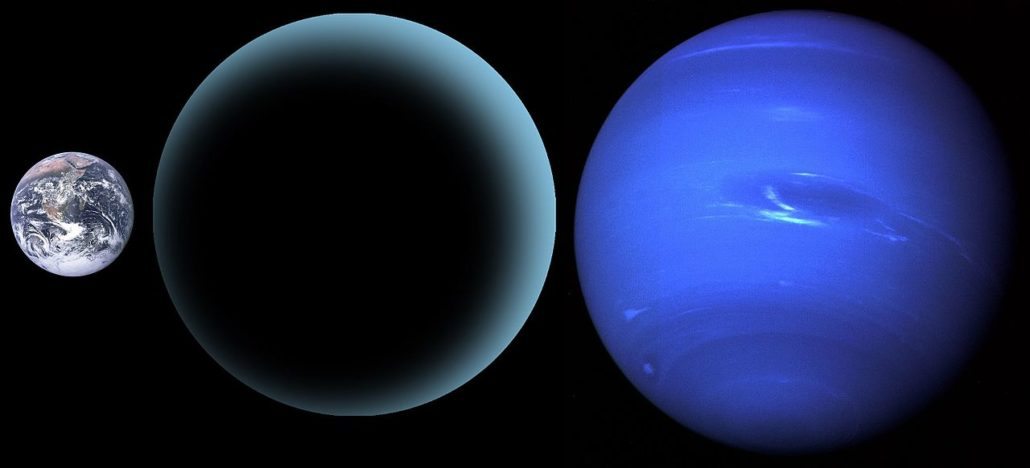Ever since Pluto was reclassified as a dwarf planet, there have been eight known planets in our solar system. We have found countless smaller bodies, and even several Pluto-like bodies beyond the orbit of Neptune, but nothing that would meet the criteria of being a planet. But recently there has been indirect evidence of a Uranus-sized planet lurking on the outer edge of our solar system, one that just might be lurking in the astronomical data we’ve gathered.
The evidence for a ninth planet comes from the orbits of the six most distant known objects in the solar system. These are icy, Pluto-like objects well beyond the orbit of Neptune. If they were truly at the edge of our solar system, one would expect their orbits to be rather randomly distributed. But instead their orbits are bunched together a bit, which implies they interact with another large body. Based on orbital statistics, the estimated mass of this hypothetical body is about 10 times that of Earth, which would make it a bit smaller than Uranus.
But indirect evidence of this ninth planet isn’t enough. To prove it exists we would have to observe it. The hypothetical orbit of planet nine puts its average distance about 700 times further than the Earth from the Sun (astronomical units, AU), but its orbit would be highly eccentric, so it would likely come as close as 250 AU. If this planet is currently in the close part of its orbit, then it may have already been observed. Large sky surveys such as WISE and Sky Survey could detect a Uranus sized planet out to about 300 AU. Planet nine could be lurking in their data, waiting to be found.
The problem is that identifying an object like planet nine is hard. It would be a faint object, and its motion across the sky would be rather small. So Zooniverse started a project where the general public could help categorize millions of objects in the in the Sky Survey data. Over just 3 days, more than 60,000 people identified about 5 million objects. Out of the data they found four objects that weren’t previously known and could satisfy the conditions for planet nine. The next step is to make new observations of these objects to see if they are asteroids, dwarf planets, or the hypothetical planet nine.
The chance that any of these candidate objects actually is planet nine is quite small. But this project is an amazing demonstration of the power of crowd sourced science. Without the general public, this project would have taken nearly four years. Although this particular data set has been analyzed, the good news is that other projects are also looking for the hypothetical planet. If you want to participate, check out Zooniverse’s Backyard Worlds, which is looking for planet nine and brown dwarfs.












